This is my family's Authentic Tzatziki Recipe, a simple recipe that relies on excellent ingredients including a good quality strained Greek yoghurt. We love it in our 'meze' platters, on our souvlakia, with our calamari, with our dolmades - the list is endless!
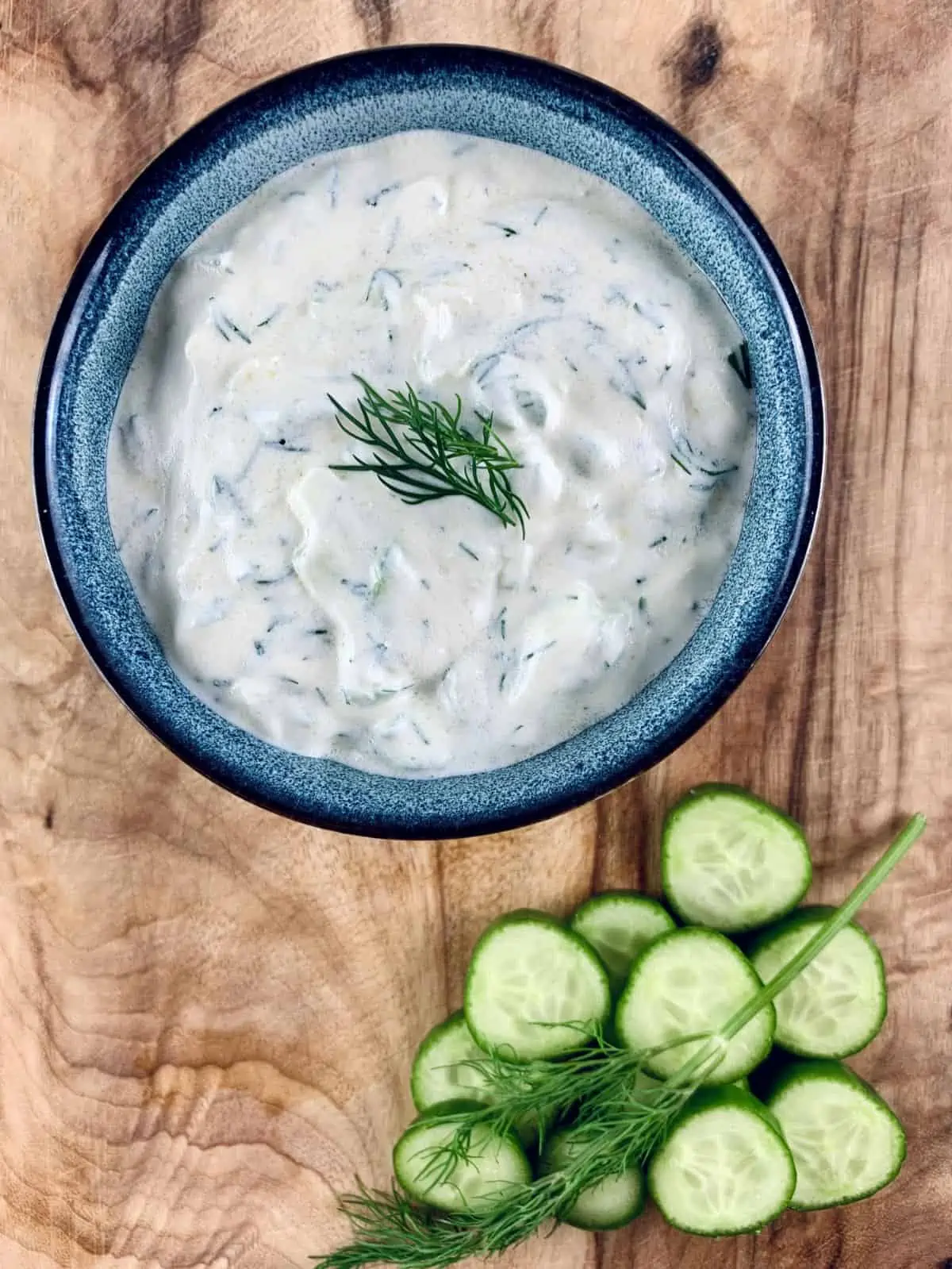
This is an original tzatziki recipe that we make intuitively in our family, we start with the strained yoghurt and add the other ingredients, then taste and adjust until we are happy with the result.
I have used it as a base for tzatziki dressing which I then drizzled on a colourful lamb salad which was unbelievably delicious 😋, you should definitely give that one a try!
What is Tzatziki?
First off tzatziki is NOT a sauce it is a dip and therefore should be thick and cream. It is a much loved and well-known Greek traditional appetizer or "meze" made from Greek yoghurt, cucumber, garlic, dill, olive oil and vinegar.
A traditional tzatziki recipe is never, ever made with cream cheese or sour cream (my Yiayia is turning in her grave right now at the mention of it!), if you are going to use them then you are not making tzatziki but just a Greek-inspired dip, sorry to disappoint you 🤷🏻♀️.
Let's Talk Ingredients & Substitutions
Our family's authentic tzatziki recipe uses red wine vinegar because it is more flavourful and dill because it lasts so much longer in the fridge.
- Greek yoghurt - traditionally we would use a full-fat strained sheeps or goats milk yoghurt, which understandabley may not be that easy to come by here. So we use a full fat Greek-style yoghurt, or a regular (unsweetened yoghurt), regardless, it is important that you take the time to strain it well. Recently, I have started to use labneh (from Coles) which is beautiful rich and creamy - perfect for tzatziki making!
- Either a Lebanese/Persian or English cucumber - or any other seedless cucumber you like. The seedless varieties are great because they have thin skins, are sweeter and don't have large seeds which can make it runny. If you are going to use regular cucumbers, then I suggest your remove the seeds and peel the hard bitter skins.
- Fresh dill - perfect for a herby flavour hit you can swap for mint if you prefer but keep in mind that mint has a tendency go to brown if kept in the fridge too long.
- Red wine vinegar - we like it because it has a more intense, punchier flavour. You can certainly swap it for white wine vinegar, or apple cider vinegar. You can use even lemon juice but keep in mind that it will taste extremely sour the longer it is kept in the fridge.
- Garlic - lots and lots of garlic for authentic Greek flavour! But, feel free to adjust according to your personal preferences 😉.
- Extra virgin olive oil - adds a velvety smoothness to this dip and is ideal as a garnish. It also acts as a thickening agent to your tzatzik if you find that you have added a bit too much vinegar.
- Salt - is used as a seasoning to enhance its flavour.
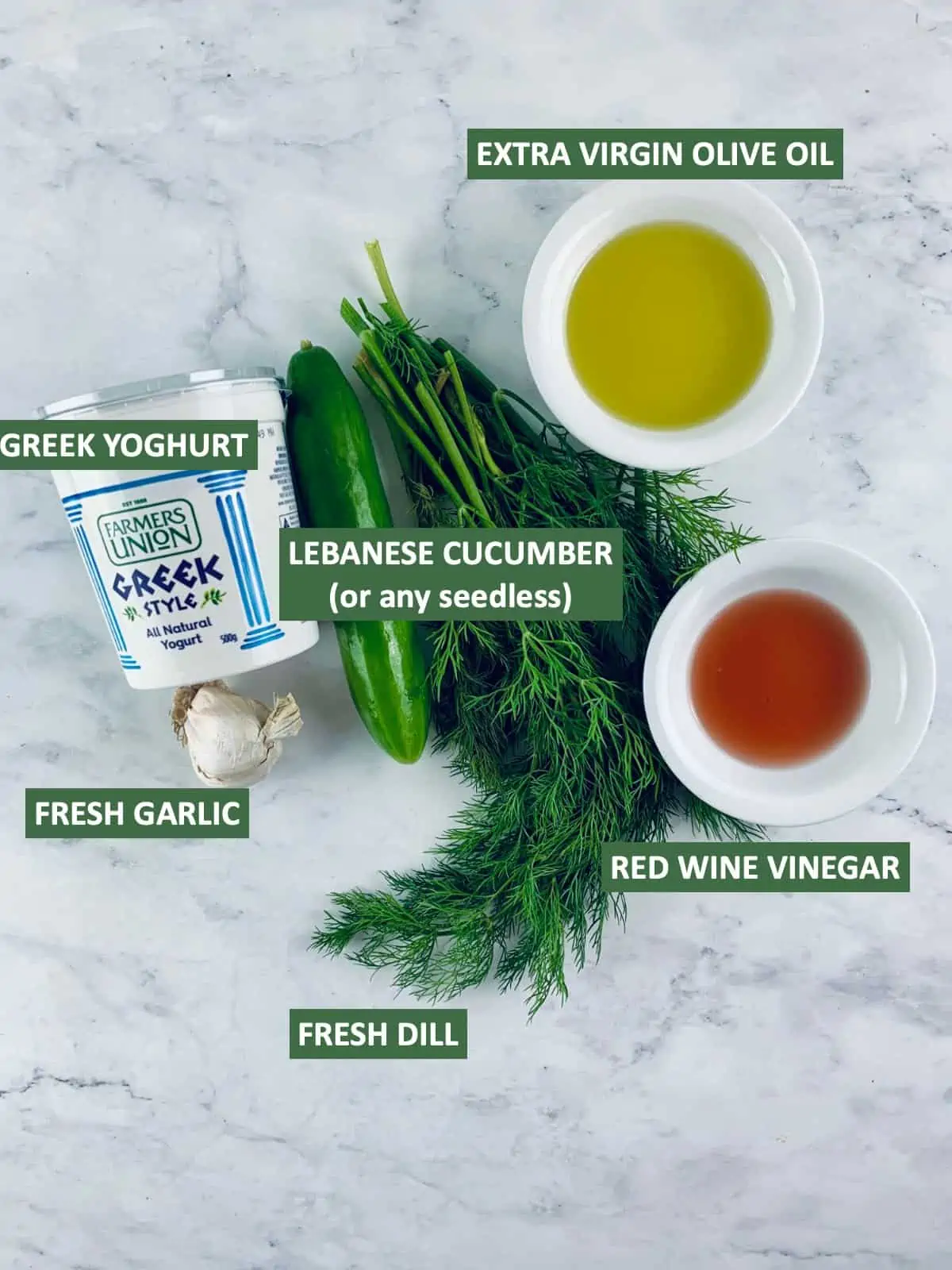
Step-by-Step Instructions
Step 1 - Strain the Yoghurt
This is a crucial step for the perfect tzatziki as it will make it creamier and thicker so that it doesn't become too runny after adding the oil and vinegar - we want a dip-like consistency and not a yoghurt sauce
Tip your Greek yoghurt in a strainer lined with cheesecloth (or thick paper towel) place a bowl underneath to catch the juices. Leave covered in your refrigerator overnight, this will reduce your yoghurt by half.
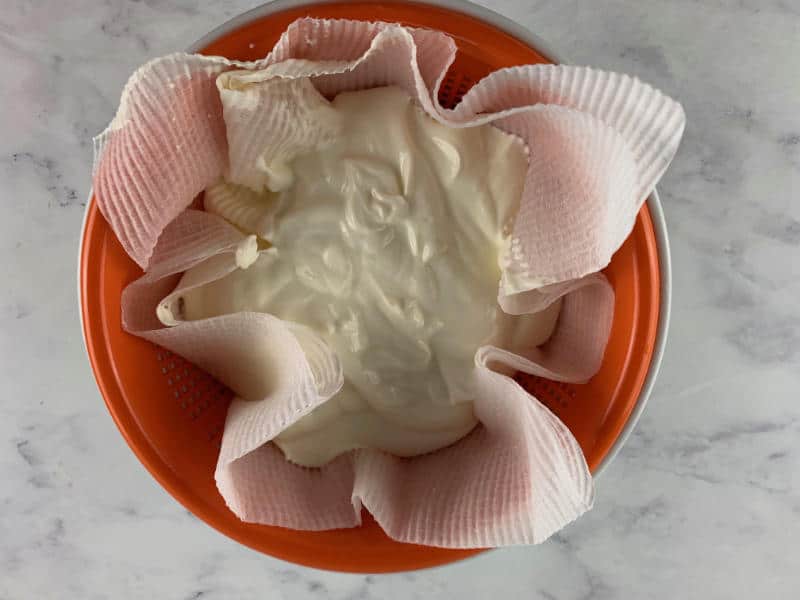
Short on time? Then use just one cup of Greek yoghurt. Allow it to strain in the fridge while you are preparing the remainder of your ingredients.
Wash your dill, pat it dry, cut off the hard stems and then cut it up finely.
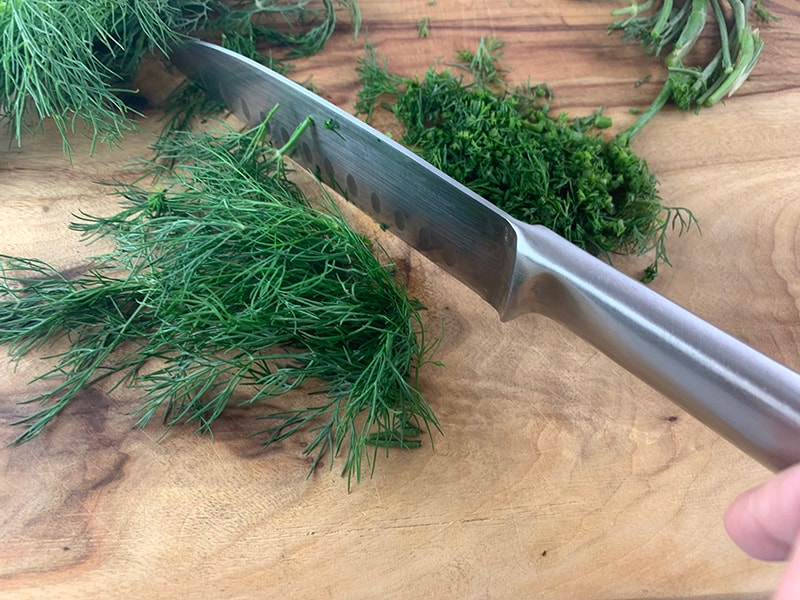
Step 2 - Prepare the Cucumber
The second crucial step for thick and creamy tzatziki is dry cucumber.
Rinse your Lebanese cucumber under cold running water, trim the ends then coarsely grate.
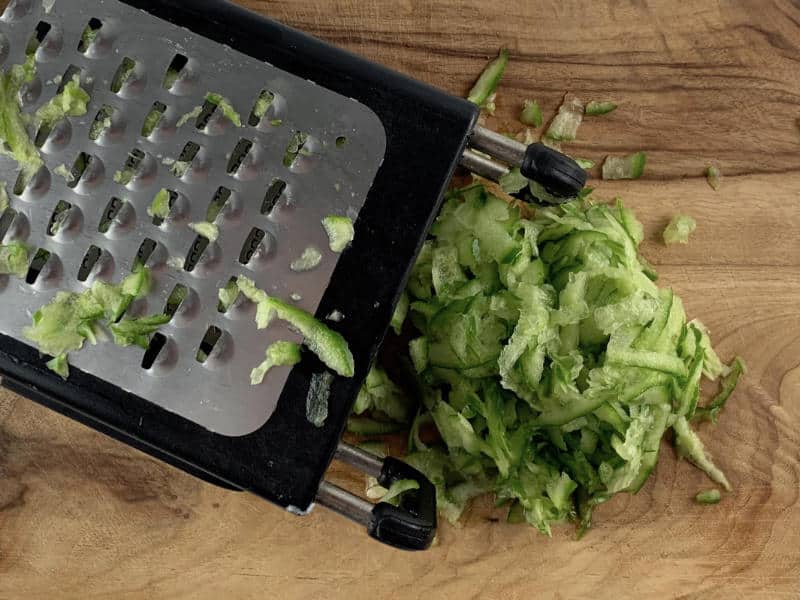
Then either place in a strainer and press out all the excess water and pat dry with a paper towel.
Or place the grated cucumber on a thick paper towel (cheesecloth also works for this) and squeeze out all the excess water.
Let it stand in the fridge for an hour or two before serving to allow the flavours to meld together.
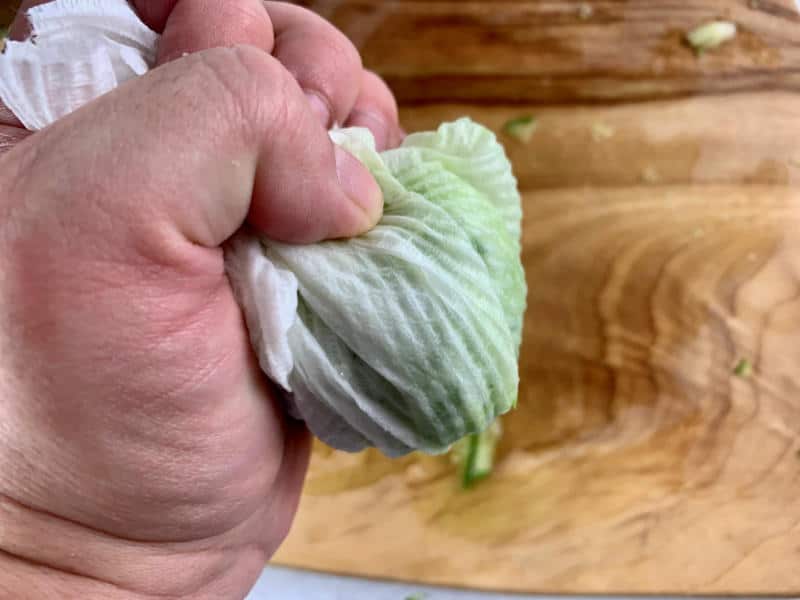
Step 3 - Mix It Well
Trim and mince your garlic either the 4-5 cloves for the supercharged version or the 2-3 cloves for the light version.
Then, put the strained Greek yoghurt, the strained cucumber, chopped dill, minced garlic, oil and vinegar in a medium bowl.
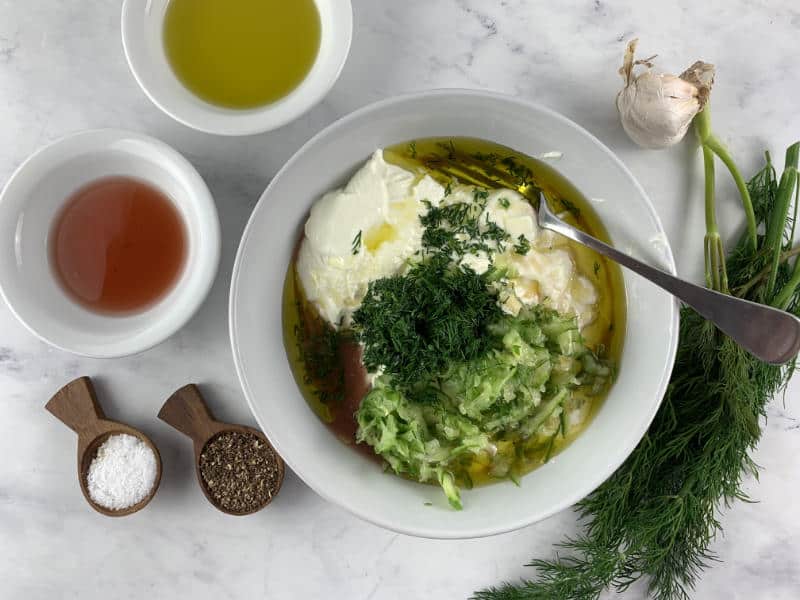
Season the with some salt and mix well until combined. Taste and adjust seasonings according to your taste.
Place in a small bowl, garnish with a sprig of mint or dill and serve.
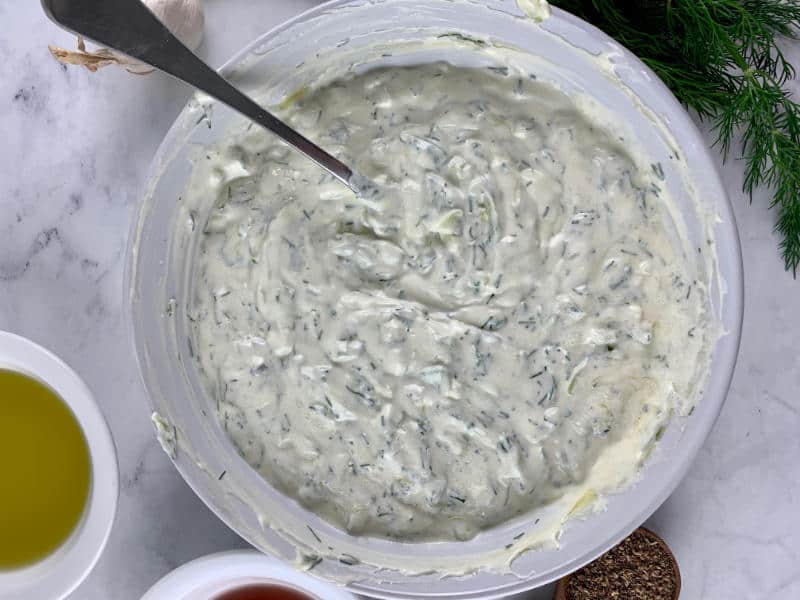
Tzatziki Serving Ideas
We love our Tzatziki as an accompaniment for barbecued meat such as souvlaki or lamb cutlets, it is also great with fried calamari.
For vegetarians, it pairs well with dolmades, Gemista (Greek stuffed vegetables,) grilled veggies such as carrots, zucchinis/courgettes, eggplant or capsicum/peppers and it is just superb served with our Black lentil salad!
Our authentic Tzatziki recipe is -
- Perfect with meat - use it in your homemade kebabs, gyros as well as any barbecued meat, poultry and even white firm-fleshed fish such as barramundi or perch.
- Great as a dip - it makes a great to serve with vegetable crudités and pita bread.
- Wonderful to add to your wraps - it makes a wonderful spread for wraps and sandwiches try your tzatziki with shredded chicken, tomato, lettuce, red capsicum (pepper) and onion.
- Sensational in salad dressings - a wonderful, light alternative to mayonnaise for your coleslaw or other salads like we have used in this tzatziki dressing great with green salads.
- Ideal as part of a meze plate - a great dip to include in a meze plate with houmous, pita, bread, dolmades, olives and chargrilled vegetables.
- Include it in a grain bowl - with brown rice, quinoa, chickpeas and fresh or roasted veggies.
Common Questions and Tips
Is Tzatziki Keto?
This will really depend on the carb count in your yoghurt so check the package carefully, our recipe has 1 net gram of carbs per tablespoon.
How Do I Make Tzatziki Vegan, Paleo or Whole30 Compliant?
The best that I can suggest is to use coconut yoghurt but you will need to add a bit more vinegar to give it the extra tartness that it needs. It will still have a hint of coconut in the background.
How Much Does It Make?
This should give you just over one cup of tzatziki if you have strained the yoghurt and comes to approximately 18 tablespoons,
How Should I Store It?
Keep it in an airtight container in a cold part of your fridge and it should last 4-5 days.
Some More of Our Traditional Greek Recipes
Recipe Card
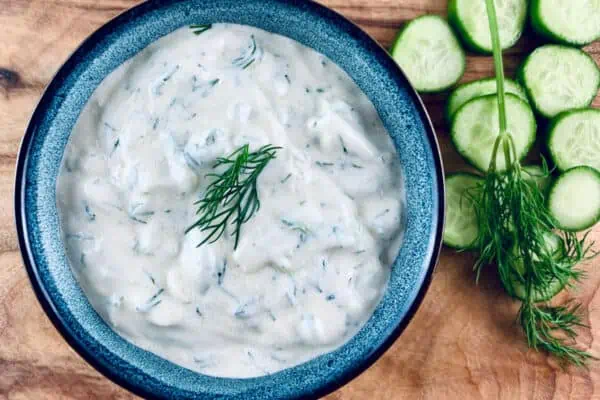
Ingredients
- 2 cups Greek yoghurt (or 1 cup if you are not straining the yoghurt overnight)
- 150 grams Lebanese cucumber (1 small Lebanese cucumber, approximately 5.3oz)
- 4 cloves garlic cloves, minced (you could use 2 if you prefer a "light" version)
- 2 tablespoons dill, fresh
- 2 tablespoons red wine vinegar
- 3 tablespoons olive oil
- Sea salt to taste
- A sprig of dill to garnish.
Instructions
- Tip your Greek yoghurt in a strainer lined with cheesecloth (or thick paper towels) place a bowl underneath to catch the juices. Leave covered in your refrigerator overnight, this will reduce your yoghurt by half.
- If you would like to make your tzatziki immediately use just one cup of Greek yoghurt. Allow it to strain in the fridge while you are preparing the rest of your ingredients.
- Wash the dill, shake then pat dry then cut finely, then mince your garlic cloves.
- Rinse your Lebanese cucumber under cold running water, trim the ends then coarsely grate.
- Then either place in a strainer and press out all the excess water and pat dry with a paper towel.
- Or place the grated cucumber on a thick paper towel (cheesecloth also works for this) and squeeze out all the excess water.
- Put the strained Greek yoghurt, the strained cucumber, chopped dill, minced garlic, oil and vinegar in a medium bowl. Season the with some salt and mix well until combined.
- Taste and adjust seasonings according to your taste.
- Place in a small bowl, garnish with a sprig of mint or dill and serve.


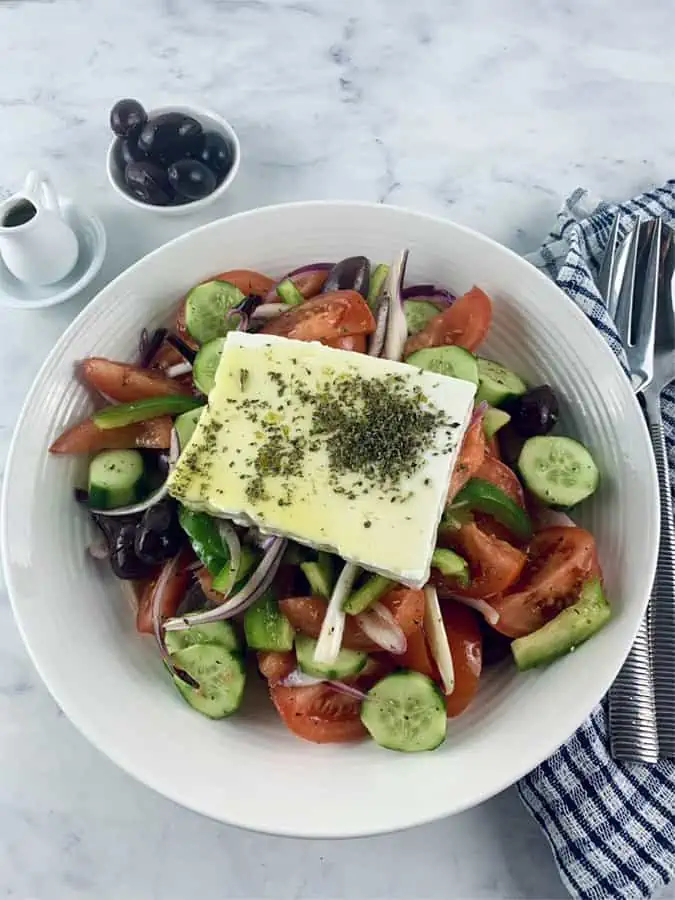
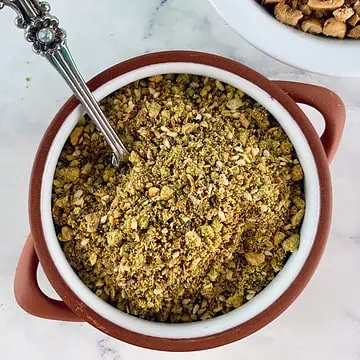

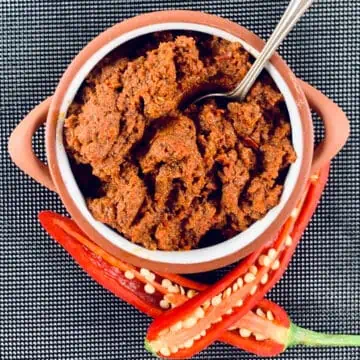
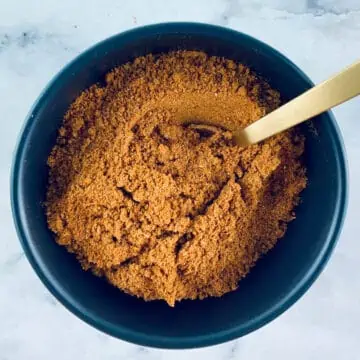
Leave a Reply